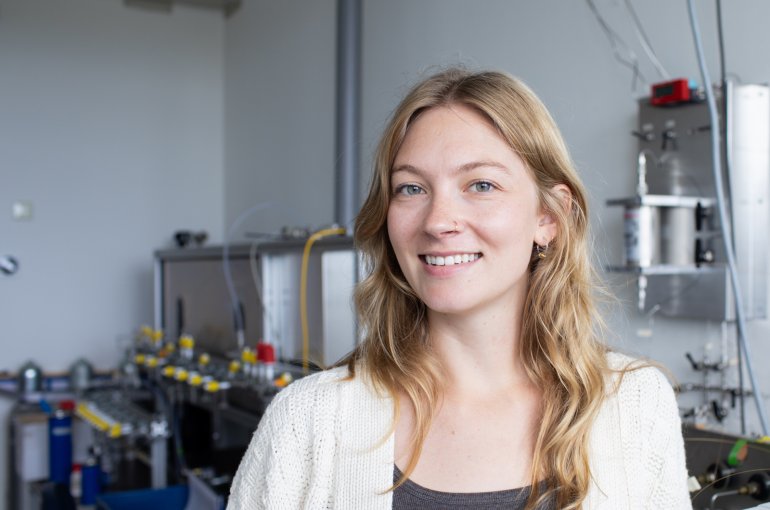Science and citizens collaborate to understand natural methane removal
“Fundamental science is key to responsible geoengineering”

How does Saharan dust remove the powerful greenhouse gas methane from the atmosphere above the Atlantic Ocean? Recently, Utrecht University and other institutes started a research project in collaboration with the shipping industry to answer this question. The project is funded by an NGO called Spark Climate Solutions and, according to the scientists, the results could potentially lead to safe and effective artificial removal of methane from the atmosphere.
Once every month, boxes of flasks arrive on the sixth floor of the Buys Ballot building at Utrecht University. They contain air samples from remote regions of the Atlantic Ocean taken by crew members of Maersk and Stolt tankers. PhD candidate Chloe Brashear receives them for analysis in the lab. By now, approximately 550 flasks have been analysed. Many more will follow, as the project will continue for a few more years.

Natural methane removal
The goal of the project is to further investigate a natural process in which the combination of Saharan dust and sea salt spray removes methane from the atmosphere. Methane is a strong greenhouse gas, and removal of methane could reduce global warming significantly. Learning how nature reduces methane could potentially result in responsible practices to artificially remove the gas. This, and other processes in which people make large-scale changes to Earth's systems to mitigate the impact of climate change are also referred to as geoengineering.
Recent discovery
The very existence of the natural methane removal process has been discovered only recently. In July 2023, a PNAS study proposed a mechanism in which iron salt aerosols are formed when Saharan mineral dust mixes with sea salt spray above the Atlantic Ocean. In lab experiments, iron salt aerosols produce reactive atomic chlorine when in the presence of UV radiation, which is also emitted by the sun. The chlorine, in turn, breaks down methane.
We now collaborate with industrial tankers that make these journeys regularly
Industrial tanker crew
To learn how this process works in the natural world, Brashear needs air samples from across the Atlantic. The samples need to be taken on a monthly basis over the next few years. “It would be very costly and energy-intensive to collect these samples with scientific research expeditions”, Brashear says. “Instead, we now collaborate with industrial tankers that make these journeys regularly.”
Crew members of these ships take air samples during their travels on designated locations and within certain timeframes. They do so by using a unique sampling tool, which fills a flask with air in just a few minutes. When the flasks arrive back in Utrecht, they are analysed. The results help determine the scale and seasonality of methane removal due to Sahara dust transport.
Artificial methane removal
Natural methane removal inspires scientists and companies to spray iron salt aerosols into the atmosphere to artificially remove methane. However, this is risky because we don’t know how it may alter the atmosphere. There are many unforeseeable consequences which, according to Brashear, can be evaluated using various modeling techniques and field studies. “We need a comprehensive understanding of the impact before engaging in these kinds of practices” Brashear says. “In other words, fundamental science is key to responsible geoengineering.”

